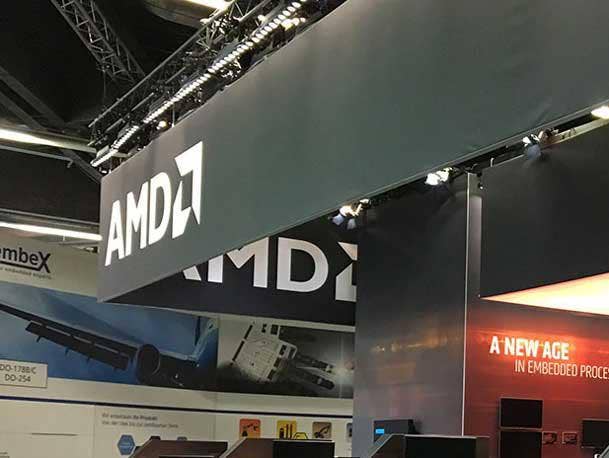AMD Reveals Ryzen 7040 CPUs With Two Core Types, Says Approach Bests Intel’s
The chip designer says the combination of Zen 4 cores and smaller and more efficient Zen 4c cores will help the company make entry-level CPUs with higher core counts at lower price points, among other things.

AMD plans to introduce Ryzen 7040 laptop CPUs that combine two processing core types in a move that the company said is better than Intel’s hybrid architecture approach for PC chips.
The Santa Clara, Calif.-based company on Thursday disclosed that two processors in the Ryzen 7040 series will combine two kinds of high-performance cores: the Zen 4 cores found in existing 7040 CPUs and the Zen 4c cores initially used for AMD’s cloud-optimized EPYC 97X4 server processors.
[Related: AMD’s Threadripper 7000 Series To Mark Return Of High-End Desktop CPUs For Prosumers]
One of the new processors, the Ryzen 5 7545U, comes with two Zen 4 cores and four Zen 4c cores to provide the “ideal combination of performance and efficiency,” according to AMD. The other, the Ryzen 3 7440U, comes with one Zen 4 core and three Zen 4c cores to achieve the same outcome.
An AMD spokesperson said the company expects laptops with the two processors will become available “over the next few months” but declined to say which PC vendors will support them.
Why AMD Is Bringing Zen 4c To Laptops
While the Ryzen 7040 CPUs with Zen 4 and Zen 4c cores exist at the lower end of the processor lineup, a company marketer said the use of two core types will give AMD greater design flexibility for both premium and entry-level CPUs for laptops in the future.
Optimized to provide the maximum amount of performance per core, Zen 4 is the fourth generation of AMD’s CPU architecture that has allowed the chip designer to gain a performance advantage in many areas and, consequently, increase market share against Intel since 2017.
Zen 4c, on the other hand, is an offshoot of Zen 4 that has been optimized for power efficiency, performance-per-watt and density, which means a higher number of Zen 4c cores can sit on a processor die than Zen 4 cores because the former is 35 percent smaller than the latter, according to Don Woligroski, senior marketing manager for consumer processors at AMD.
By combining two Zen 4 cores and four Zen 4c cores in the Ryzen 5 7545U, the processor will be capable of offering roughly the same performance as a similar CPU with six Zen 4 cores across the typical thermal design power (TDP) range for laptops, which is between 15 watts and 28 watts, Woligroski said.
In a graph comparing the performance of the two processors, Woligroski showed that the performance is roughly the same between 17.5 watts and 22.5 watts. However, there is a greater convergence at both ends of the TDP range. The Ryzen 5 7645U with two core types offers slightly better performance at a lower wattage, and vise versa for the similar CPU with only Zen 4 cores at a higher wattage.
“A real-world user would never see a difference from a real-world performance standpoint,” he said.
The benefit of using two core types in this manner, according to Woligroski, is that AMD can make entry-level processors with higher core counts at lower price points.
“I think it’s a great way to bolster the entry level, because I don’t think we would have a Ryzen 5 entry processor,” he said.
“I don’t know if it would have made sense if we had to make them all out of Zen 4 cores all the time. But the ability to leverage [Zen 4c] has led us scale more cores down to a lower price point,” he added.
AMD could use Zen 4c to provide higher core counts in premium laptop CPUs too, according to Woligroski, but the company doesn’t have anything to announce in this area, at least for now.
“So in the future, we could squeeze more cores into a premium processor and get higher multi-threaded performance,” he said.
How AMD’s Approach Differs From Intel’s
Despite the differences in size and design optimization targets, Zen 4 and Zen 4c are the same architecture and share the same instruction sets, latencies and L1 cache per core, among other things.
This means the new Ryzen 7040 CPUs with the Zen 4 and Zen 4c cores don’t require a hardware-based scheduler and only need to rely on the operating system’s scheduler to properly assign tasks between the two core types, according to Woligroski.
“The only real difference for consumers is the size of these on the [processor] die. This is transparent to the operating system. This doesn’t change anything about how these are utilized,” he said.
The approach is unlike Intel’s hybrid architecture, which requires a hardware-based scheduler called Intel Thread Director that assigns demanding applications to the performance cores and background tasks to the efficient cores in the company’s most recent Core CPUs, Woligroski said.
“Just so there’s no confusion, this is not our [efficient] core,” he said of the Zen 4c core. “If AMD goes and makes a core that’s optimized for low-power background tasks, that’s really not what this is.”
While AMD could use the Zen 4c core in other client processors in the future, it’s not the only technology the company may introduce to offer more differentiation in the segment, Woligroski said.
“This isn’t the only technology we’re exploring. We are looking down a lot of different paths on different ways to exercise our portfolio, where it makes sense for consumers,” he said.